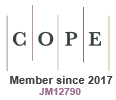Investigation of free-living highland wild dogs near Grasberg Gold Mine, Papua Province, Indonesia
James K. McIntyre A # , Caitlin J. Curry B # , Lisa L. Wolf A , Hendra K. Maury
B # , Lisa L. Wolf A , Hendra K. Maury  D , Leonardo A. Numberi
D , Leonardo A. Numberi  D , Suriani Surbakti D and Brian W. Davis
D , Suriani Surbakti D and Brian W. Davis  C E *
C E *
A
B
C
D
E
# These authors contributed equally to this paper.
Handling Editor: Mark Eldridge
Abstract
Following reports of free-living wild dogs, Canis sp., resembling the descriptions and behaviours of New Guinea singing dogs in the Puncak Jaya area in 2015, a three-phase assessment was conducted in three expeditions occurring in 2016, 2018, and 2022. The goals of these studies were to determine the incidence, status, and natural history of wild dogs near the Grasberg Gold Mine in Papua Province, Indonesia. The assessments identified the existence of Highland wild dogs (HWD) through indirect and direct observations by using trail cameras and field observation. Additional quantitative information about their behaviour and morphology were collected through the capture of eight dogs. The captured dogs underwent comprehensive medical examinations, and biological samples were collected for genomic analyses to determine the genetic relationship between HWD and other canines. Additionally, four of the dogs were equipped with global positioning system (GPS) collars to study the ranging behaviour of HWD for the first time. Documenting the existence of HWD has further strengthened the establishment of Papua’s position as one of the world’s megadiverse regions.
Keywords: camera trap, collar, dingo, expedition, scat, singing dog, wild dog.
References
Allen, B. L., Miller, C., Wolf, L., Maury, H. K., Numberi, L. A., Surbakti, S., Silaban, B. N. B, Kusuma, K. I., and McIntyre, J. K. (2024). Insights into the spatial ecology of the world’s most ancient dofg: high-altitude movements of New Guinea dingoes. Global Ecology and Conservation 56, e03264.
| Crossref | Google Scholar |
Behrendorff, L., King, R., and Allen, B. L. (2023). Efficacy of Management Efforts to Reduce Food-Related Dingo–Human Interactions and Conflict on K’gari (Fraser Island), Australia. Animals 13, 204.
| Crossref | Google Scholar |
Koler-Matznick, J., Brisbin, I. L., Feinstein, M., and Bulmer, S. (2003). An updated description of the New Guinea singing dog (Canis hallstromi, Troughton 1957). Journal of Zoology 261, 109-118.
| Crossref | Google Scholar |
Mancinelli, S., Boitani, L., and Ciucci, P. (2018). Determinants of home range size and space use patterns in a protected wolf (Canis lupus) population in the central apennines, Italy. Canadian Journal of Zoology 96, 828-838.
| Crossref | Google Scholar |
McIntyre, J. K., Wolf, L. L., Sacks, B. N., Koibur, J., and Brisbin, I. L. (2019). A population of free-living highland wild dogs in Indonesian Papua. Australian Mammalogy 42, 160-166.
| Crossref | Google Scholar |
Newsome, T. M., Ballard, G. A., Dickman, C. R., Fleming, P. J. S., and Van De Ven, R. (2013). Home Range, activity and sociality of a top predator, the dingo: a test of the resource dispersion hypothesis. Ecography 36, 914-925.
| Crossref | Google Scholar |
Newsome, T. M., Howden, C., and Wirsing, A. J. (2019). Restriction of anthropogenic foods alters a top predator’s diet and intraspecific interactions. Journal of Mammalogy 100, 1522-1532.
| Crossref | Google Scholar |
Papua New Guinea (2021). IUCN Green List. Available at https://iucngreenlist.org/country/papua-new-guinea/ [accessed 19 January 21].
Poessel, S. A., Breck, S. W., and Gese, E. M. (2016). Spatial ecology of coyotes in the Denver metropolitan area: Influence of the urban matrix. Journal of Mammal 97, 1414-1427.
| Crossref | Google Scholar |
PT Freeport Indonesia (2021). Biodiversity. Available at https://ptfi.co.id/en/biodiversity [accessed 19 January 2021].
Pujolar, J. M., Blom, M. P. K., Reeve, A. H., Kennedy, J. D., Marki, P. Z., Korneliussen, T. S., Freeman, B. G., Sam, K., Linck, E., Haryoko, T., Iova, B., Koane, B., Maiah, G., Paul, L., Irestedt, M., and Jønsson, K. A. (2022). The formation of avian montane diversity across barriers and along elevational gradients. Nature Communications 13, 268.
| Crossref | Google Scholar |
Sacks, B. N., Moore, M., Statham, M. J., and Wittmer, H. U. (2011). A restricted hybrid zone between native and introduced red fox (Vulpes vulpes) populations suggests reproductive barriers and competitive exclusion. Molecular Ecology 20, 326-341.
| Crossref | Google Scholar |
Sandall, E. L., Maureaud, A. A., Guralnick, R., McGeoch, M. A., Sica, Y. V., Rogan, M. S., Booher, D. B., Edwards, R., Franz, N., Ingenloff, K., Lucas, M., Marsh, C. J., McGowan, J., Pinkert, S., Ranipeta, A., Uetz, P., Wieczorek, J., and Jetz, W. (2023). A globally integrated structure of taxonomy to support biodiversity science and conservation. Trends in Ecology & Evolution 38, 1143-1153.
| Crossref | Google Scholar |
Surbakti, S., Parker, H. G., McIntyre, J. K., Maury, H. K., Cairns, K. M., Selvig, M., Pangau-Adam, M., Safonpo, A., Numberi, L., Runtuboi, D. Y. P., Davis, B. W., and Ostrander, E. A. (2020). New Guinea highland wild dogs are the original New Guinea singing dogs. Proceedings of the National Academy of Sciences of the United States of America 117, 24369-24376.
| Crossref | Google Scholar |


